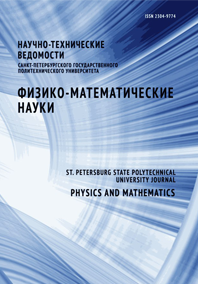Spatial self-phase modulation of light in liquid dispersions based on conjugates of phthalocyanines and carbon nanotubes
The growth in the power of laser systems makes the problem of protecting photosensitive elements of optical systems and visual organs from high-intensity radiation an urgent issue. This work explores the possibility of optical limitation of quasi-continuous laser radiation using liquid dispersions of conjugates of phthalocyanines and carbon nanotubes. It has been found that the laser beam passes through the studied materials unchanged at low power (< 100 mW), and then begins to expand with the appearance of an interference pattern. The use of a limiting diaphragm makes it possible to block part of the laser radiation, which leads to the attenuation of the laser radiation passed through the “sample-diaphragm” system. This phenomenon can be used to protect light-sensitive elements in optical systems.


